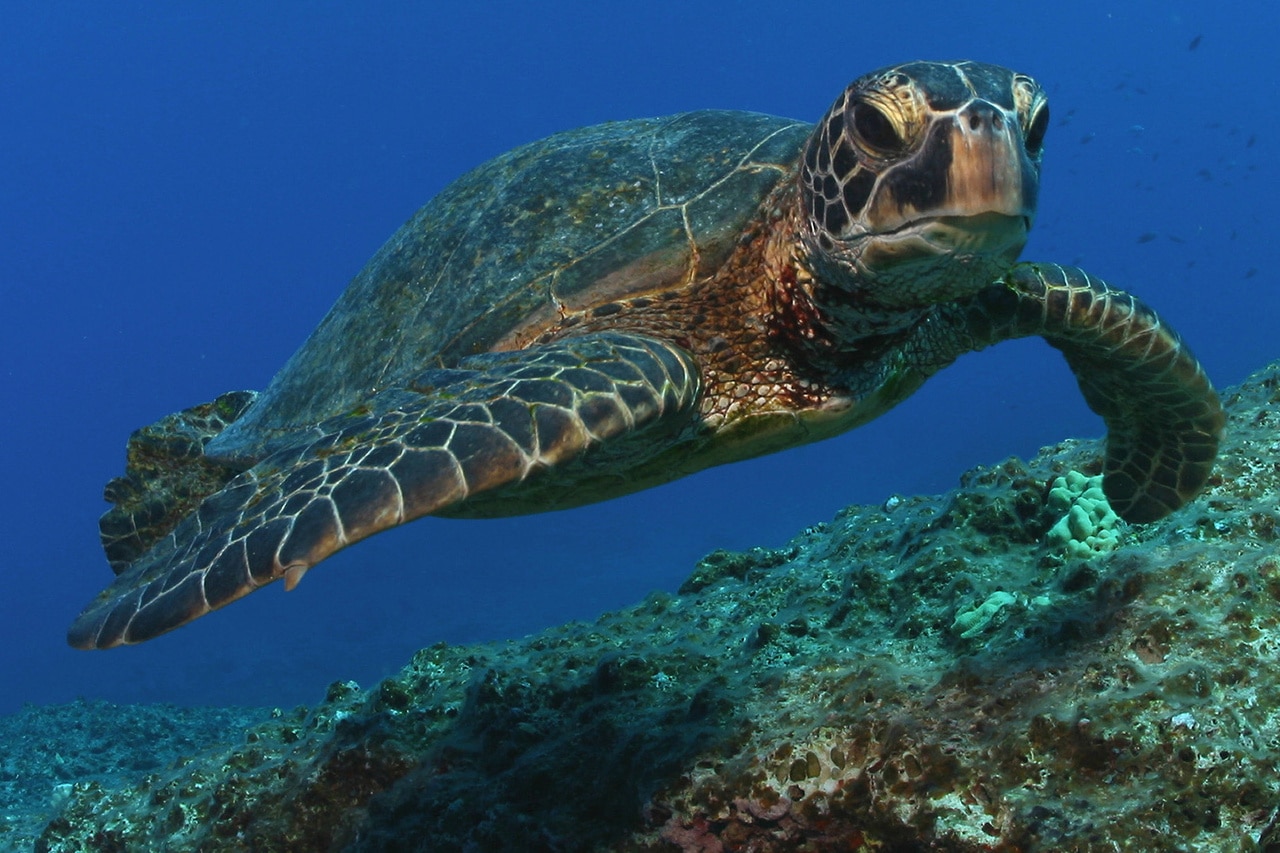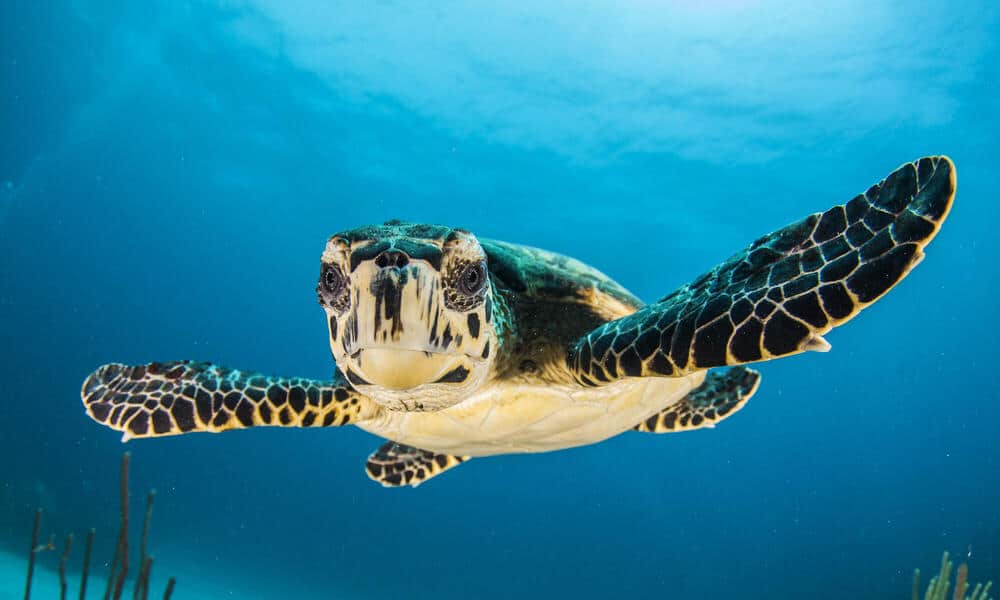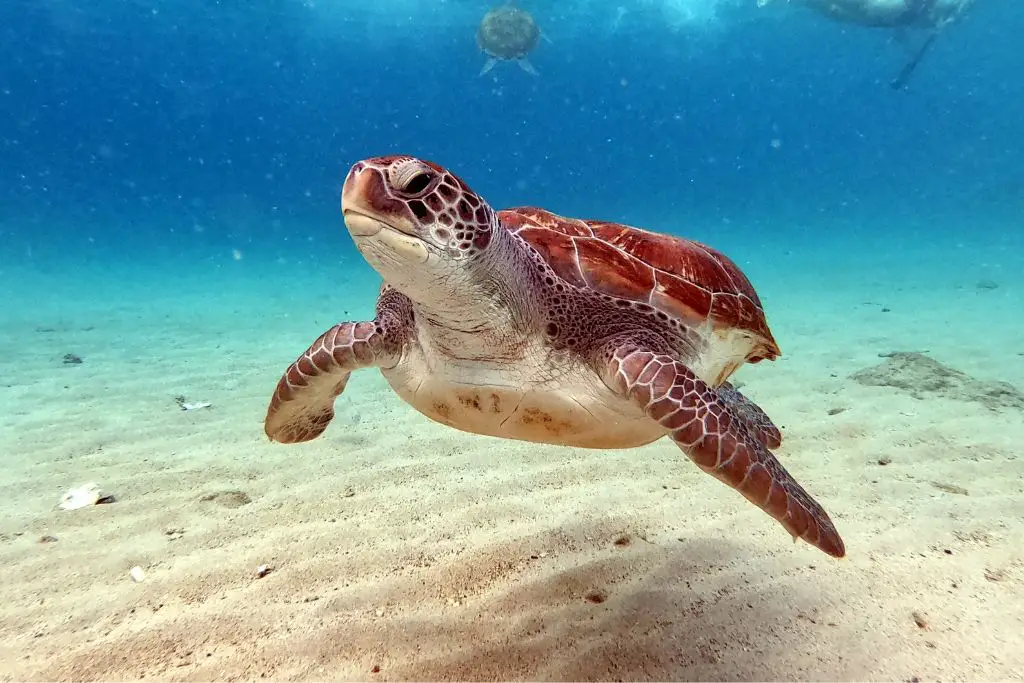How To Protect Sea Turtles

Introduction
How To Protect Sea Turtles: Sea turtles, majestic and ancient creatures that have roamed the world’s oceans for millions of years, are facing an unprecedented threat to their survival. These gentle giants are essential to the health of marine ecosystems, yet they are now in peril due to human activities and environmental changes. In this era of environmental awareness and responsibility, it is crucial to understand the significance of protecting sea turtles and learn how we can contribute to their conservation.
Sea turtles play a vital role in marine ecosystems by helping to maintain the balance of sea grass beds and coral reefs. They are known as keystone species, as their presence or absence can have a profound impact on the entire ecosystem. Unfortunately, sea turtles face numerous challenges, including habitat destruction, pollution, climate change, and accidental capture in fishing gear.
The importance of sea turtles, their life cycle, and the specific threats they face. We will also explore various conservation strategies and practices that can be adopted to protect these magnificent creatures. From reducing plastic pollution to supporting responsible tourism and enforcing fishing regulations, there are numerous ways individuals and communities can make a difference in safeguarding sea turtles and preserving the fragile ecosystems they inhabit.
By understanding and actively participating in sea turtle conservation efforts, we can ensure that these ancient mariners continue to grace our oceans for generations to come.

How do turtles avoid danger?
Most sea turtle species have a hard shell that helps protect them from predators. They are also very fast swimmers and are often able to evade danger. Leatherback sea turtles have a soft shell, but are so large that are only in danger from the largest predators (and man).
Turtles have developed several remarkable adaptations to avoid danger and survive in their often perilous environments. One of their primary defenses is their hard, protective shell. This bony structure, composed of the carapace (upper shell) and plastron (lower shell), provides a secure hiding place when danger approaches. Turtles can retract their head, legs, and tail inside the shell, making them nearly impervious to many potential predators.
In addition to their shell, turtles have other strategies for evading threats. Their keen senses of sight and smell help them detect approaching danger, allowing them to respond quickly. When they sense a threat, some turtles may hiss, snap, or bite to deter predators. Others rely on camouflage, blending into their surroundings to avoid detection. Aquatic turtles may quickly dive into the water and swim away, using their strong limbs and streamlined bodies to escape.
Overall, turtles have evolved a combination of physical defenses, behavioral adaptations, and sensory awareness to navigate their dangerous world successfully. These remarkable creatures have thrived for millions of years by honing their ability to evade danger, making them an enduring symbol of resilience in the natural world.
What can harm sea turtles?
Illegal harvesting, habitat encroachment, and pollution are only some of the things sea turtles must fight against to stay alive.
Sea turtles, despite their resilience and ancient lineage, face an array of threats in today’s modern world. These magnificent creatures are particularly vulnerable to human activities and environmental changes. Some of the primary dangers that harm sea turtles include:
- Habitat Destruction: Coastal development, including the construction of resorts and buildings, can disrupt sea turtle nesting sites. Bright artificial lighting near beaches can disorient hatchlings, leading them away from the ocean.
- Pollution: Marine pollution, especially plastic debris, poses a grave threat to sea turtles. They often mistake plastic bags and other trash for food, which can lead to ingestion and blockages in their digestive systems.
- Climate Change: Rising temperatures can affect sea turtle sex ratios, with higher temperatures leading to more female hatchlings. Additionally, climate change-related weather events can damage nesting areas and alter ocean currents, affecting their migratory patterns.
- Bycatch: Sea turtles can become unintentional victims of fishing operations, where they get entangled in fishing nets or caught on hooks. This bycatch can result in injuries or death.
- Poaching: Illegal poaching for their meat, eggs, and shells remains a significant threat in some regions, despite protective measures.
To protect these iconic marine species, conservation efforts focus on mitigating these threats through measures such as nesting site protection, plastic waste reduction, sustainable fishing practices, and global climate change mitigation. It is essential to address these dangers collectively to ensure the survival of sea turtles and the health of our oceans.
Why do we need to protect turtles?
Fundamental Link in Marine Ecosystems. Sea turtles are a fundamental link in marine ecosystems. They help maintain the health of seagrass beds and coral reefs that benefit commercially valuable species such as shrimp, lobster, and tuna.
Protecting turtles is crucial for several compelling reasons:
- Biodiversity: Turtles are an integral part of diverse ecosystems, serving as both predators and prey. Their presence helps maintain a balance in marine and terrestrial environments. Protecting turtles contributes to the overall biodiversity and resilience of these ecosystems.
- Keystone Species: Some turtle species, like sea turtles, are considered keystone species. They have a disproportionately large impact on their ecosystems. For example, sea turtles help control seagrass beds and coral reefs by grazing on algae, which in turn supports various marine life.
- Indicator of Ecosystem Health: The well-being of turtle populations can serve as an indicator of the overall health of marine and coastal ecosystems. A decline in turtle populations may signal problems such as habitat degradation, pollution, or overfishing.
- Cultural and Economic Value: Turtles hold cultural and economic significance for many communities around the world. They are part of folklore, traditions, and tourism industries. Protecting turtles can help sustain these cultural practices and provide livelihoods for communities dependent on turtle-related tourism.
- Scientific Research: Turtles offer valuable insights into various aspects of biology, ecology, and evolution. Studying them can lead to discoveries about long-distance migrations, reproductive strategies, and more.
- Conservation of Marine Ecosystems: Turtles are often considered umbrella species, meaning that by protecting them, we also protect many other species within their habitat. Conservation efforts aimed at turtles can have far-reaching benefits for marine life and habitats.
- Ethical Responsibility: As stewards of the planet, we have an ethical responsibility to protect and preserve all species, including turtles. Their survival is indicative of our commitment to biodiversity and the health of the Earth’s ecosystems.
How do turtles need to survive?
They need the right lighting, temperature and water filtration system. Countless pet turtles die from being kept in inadequate conditions. Turtles shipped by mail and other delivery services often die on the way. If maintained properly, however, turtles can live for decades and grow to be a foot long.
Turtles, with their ancient lineage dating back over 200 million years, have evolved a remarkable set of adaptations to ensure their survival in diverse environments. These adaptations revolve around their ability to thrive both in water and on land.
First and foremost, turtles have developed a hard, protective shell that acts as armor against predators. This shell provides them with a sturdy defense mechanism, allowing them to retract their entire body inside when threatened. Their slow-moving nature helps turtles conserve energy and avoid confrontations, as they rely on their defensive traits rather than speed to escape danger.
In aquatic environments, turtles are superb swimmers, equipped with streamlined bodies and webbed feet or flippers, depending on the species. They use their strong limbs to navigate through water and forage for food, such as aquatic plants, small fish, and invertebrates.
On land, turtles require suitable habitats for basking and nesting. They rely on warm, sunny spots to regulate their body temperature, as they are ectothermic and depend on external heat sources. Nesting sites are crucial for egg incubation and the survival of their offspring.
In essence, turtles’ survival hinges on their remarkable physical adaptations and the availability of suitable habitats, making them resilient and enduring creatures in the ever-changing world of nature.
How do sea turtles protect themselves from humans?
Most sea turtle species have a hard shell that helps protect them from predators. They are also very fast swimmers and are often able to evade danger. Leatherback sea turtles have a soft shell, but are so large that are only in danger from the largest predators (and man).
Sea turtles employ a combination of natural adaptations and human conservation efforts to protect themselves from the myriad threats posed by humans. One of their most remarkable defenses is their strong, bony shells, which provide essential protection against predators in the wild. These shells, which are composed of interconnected plates called scutes, act as a suit of armor shielding the turtle’s vulnerable body.
Conservationists and organizations around the world play a crucial role in safeguarding sea turtles from human threats. They work tirelessly to establish protected nesting sites, enforce laws against poaching and egg harvesting, and educate communities about the importance of turtle conservation. Additionally, campaigns promoting responsible tourism practices, such as reducing artificial lighting on nesting beaches to prevent hatchlings from getting disoriented, are vital in minimizing human disturbances.
Sea turtles protect themselves from humans through a combination of their natural adaptations and the collaborative efforts of conservationists, governments, and communities dedicated to ensuring the survival of these ancient and majestic creatures. By raising awareness and implementing protective measures, we can help sea turtles continue to thrive in their oceanic habitats.
How can I reduce plastic pollution to protect sea turtles?
Reducing plastic pollution to safeguard sea turtles requires conscious effort and a commitment to sustainable practices. Firstly, opting for reusable alternatives like stainless steel straws, cloth bags, and glass containers can significantly reduce single-use plastic consumption. Avoiding products with excessive packaging and choosing items with minimal or eco-friendly packaging also plays a crucial role.
Supporting initiatives that promote recycling and proper waste disposal is essential. Sorting and recycling plastics ensures they don’t end up in oceans, posing threats to marine life. Additionally, participating in or organizing community clean-up events along coastlines and beaches helps remove existing plastic waste, preventing it from entering sea turtle habitats.
Raising awareness about the detrimental effects of plastic pollution on sea turtles is vital. Sharing information through social media, organizing workshops, or joining environmental groups can amplify this message. Advocating for policies that restrict single-use plastics and encourage responsible manufacturing and packaging practices is another powerful avenue to combat this issue.
Ultimately, every individual’s choices contribute to the collective effort in protecting sea turtles and their habitats from the harmful impacts of plastic pollution. By adopting these practices, we can make a positive difference in preserving the delicate balance of our oceans and the creatures that call them home.
What should I do if I encounter a sea turtle on the beach?
If you encounter a sea turtle on the beach, it’s crucial to act responsibly and respectfully to ensure the safety and well-being of the animal. Firstly, maintain a calm and quiet demeanor. Sea turtles can be easily stressed, so it’s important to avoid sudden movements or loud noises. Keep a respectful distance, ideally at least 10 feet away, to observe without causing any disturbance.
Do not attempt to touch or handle the turtle. Human contact can be harmful and distressing for these creatures. Additionally, avoid using flash photography, as it can disorient and displace them.
If the turtle appears injured, disoriented, or in distress, contact local wildlife authorities or a sea turtle conservation organization immediately. They will have the expertise and resources to assess the situation and provide appropriate care.
If the turtle is nesting, observe from a distance and avoid shining lights on or near her. It’s crucial not to disrupt the nesting process, as this is a critical stage in the sea turtle’s life cycle.
In all cases, follow any guidelines or instructions provided by local authorities or conservation organizations. Remember, your responsible actions can make a significant difference in the conservation efforts to protect these magnificent creatures.
What can I do to protect sea turtle nests on the beach?
Protecting sea turtle nests on the beach is a vital endeavor to ensure the survival of these endangered creatures. Firstly, it’s crucial to familiarize oneself with local conservation regulations and guidelines. This includes understanding designated nesting areas and adhering to any restrictions in place during nesting seasons. One of the simplest yet most effective actions is to avoid using artificial lighting on the beach at night. Bright lights disorient hatchlings, leading them away from the safety of the ocean.
Another key step is to steer clear of disturbing nesting sites. This involves refraining from digging or building structures near nests, as well as respecting marked-off areas. If you come across a nest that isn’t properly marked, notify local authorities immediately. Additionally, removing any trash or litter from the beach can prevent entanglement and ingestion risks for both turtles and hatchlings.
Participating in organized beach cleanups and volunteer programs dedicated to sea turtle conservation is a proactive way to contribute. These efforts not only help maintain a safe environment for nesting, but also raise awareness about the plight of sea turtles. Ultimately, safeguarding sea turtle nests demands collective responsibility, fostering an environment where these ancient creatures can continue to thrive.

Conclusion
The protection of sea turtles is not only a moral imperative but also essential for maintaining the health and balance of our oceans. These ancient creatures have survived for millions of years, adapting to changing environments and challenges, but they now face unprecedented threats largely driven by human activities.
Such as reducing plastic pollution, supporting responsible tourism, and enforcing fishing regulations, provide a roadmap for individuals, communities, and governments to contribute to sea turtle conservation. By implementing these measures, we can mitigate the harm inflicted on sea turtle populations and turtles habitats.
It is also crucial to raise awareness about the importance of sea turtles and the broader marine ecosystem. Education and advocacy can mobilize people around the world to take action, whether it’s participating in beach clean-ups, supporting conservation organizations, or making informed consumer choices.
In protecting sea turtles, we are not only preserving a remarkable species but also safeguarding the intricate web of life in our oceans. Every effort counts, and together, we can ensure that sea turtles continue to grace our seas, enriching our planet with their presence for generations to come. Their survival depends on our commitment, responsibility, and collective action, and the rewards are immeasurable—healthier oceans and a more sustainable future for all.



